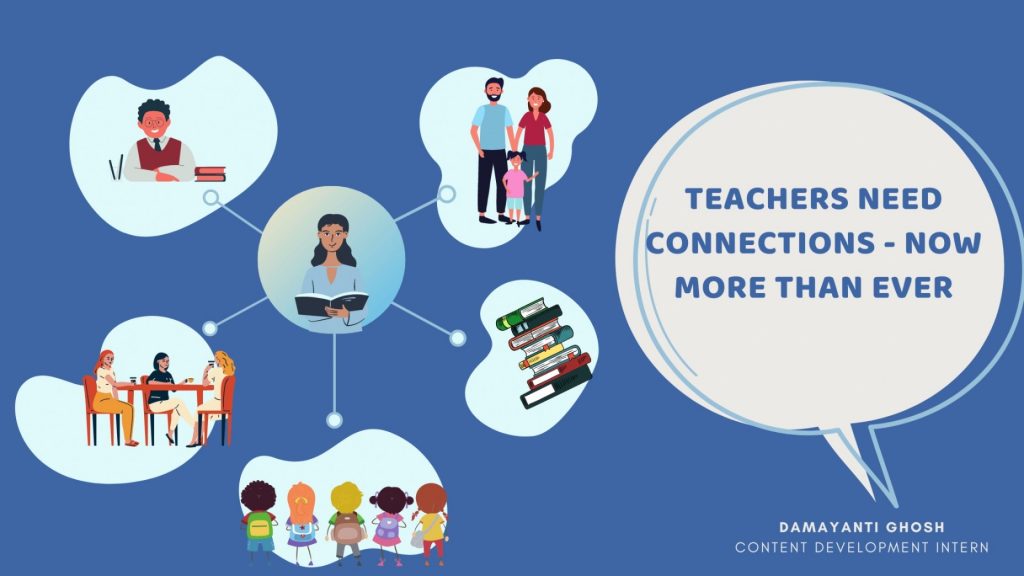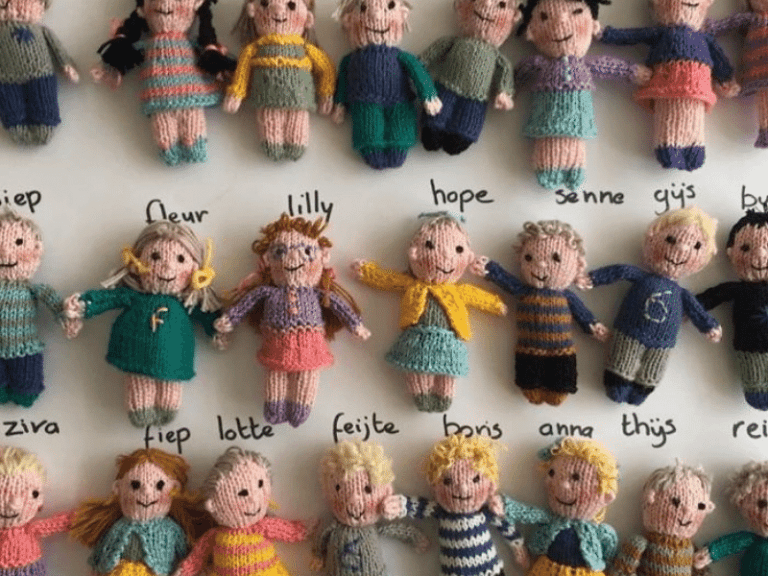
An open secret behind the success of great teachers is their authentic connection with five forces- the students, the curriculum, the colleagues, the school leadership, and the parents. These connections help the teachers to flourish, not only professionally but also emotionally. They forge these connections to gauge their teaching ability, purpose, and satisfaction.
However, in recent times, the shift of teaching-learning to a virtual setting has given rise to a heightened level of anxiety among teachers. Tomorrowsmith Foundation highlights the five connections of a teacher that have endured significant changes during the pandemic.
Connection with Students
Authentic student-teacher connections are immensely helpful for both students and teachers. Teachers build this connection by listening to, observing, and holding deeper conversations with their students.
In schools, teachers meet students within and outside the classroom—in playgrounds, hallways, and the school bus. They use these opportunities to catch up with students about what they did over the weekend, or what movie they watched, or how things are going with their family members.
Talking-to-the-Screen
In an online setting, the informal conversations are challenging and awkward too, both for the teacher and the students with family members at an earshot. Teachers report that on digital screens, total classroom participation is a bit too much to ask for.
The unreliability of internet connection also poses significant obstacle to the teacher- student connection. Because of this, often, students cannot switch on their cameras, making it harder for the teacher to catch on to the non-verbal cues.
These, compounded with the pressures of completing the syllabus, have severely impacted the teacher-pupil connection.
Meinster-Van der Duin is a schoolteacher in Haarlem, Netherlands. When her school shut its doors because of the pandemic, it suddenly dawned on her that this closure might be a long haul and there is no certainty about getting to meet her students soon. To overcome this loneliness and to feel more connected to her adored students, she began knitting tiny dolls for her students. She crafted each doll to look like her students. Her students were so delighted by these incredibly crafted dolls, they coaxed their teacher to knit one that looks like herself as well!
Companionship with Colleagues
Successful teachers have each other’s back. They rely on the authentic connection made with fellow teachers for their emotional well-being. Face-to-face interactions with fellow teachers are rewarding for a teacher. They can collaborate with their colleagues and sometimes share the workload with them. Online education has made them companionless.
Every teacher is fighting their own battle. The staff room interactions were a great way for teachers to unwind. Because of the absence of these interactions, they have limited opportunities to share their thoughts, feelings, and achievements.
Interaction with Curriculum
For teaching to be effective, a teacher needs to form an authentic relationship with the curriculum. This requires the teacher to reflect upon their teaching practices, and how those practices influence student learning. The teacher tries to ensure a fit between student understanding and curriculum.
At the beginning of each academic session, teachers plan out the strategies for instruction. They study the course content and expect which learning strategies would best match the curriculum requirements. Overnight, the pandemic disrupted their plans. Teachers faced unexpected new demands-learning new technology, functioning from home with other distractions, and erratic internet connectivity. These leave limited time for the teachers to reflect upon whether their teaching strategy appropriately met curriculum objectives and student needs.
Since learning has shifted online, it has hugely impacted students’ learning pace. Planning out lesson plans and goals, keeping in mind the student’s individual attainability, is a monumental challenge now.
Relationship with Parents
With a shared goal of fostering and nurturing a student’s learning and greater well-being, teachers and parents work together harmoniously. Both these adult groups are important for a child to develop as an individual.
The pandemic has strained the teacher-parent connection too. Most teachers had no training to teach remotely, but online teaching brought them under the direct scrutiny of parents who could watch and hear them. The stress levels for both parents and the teachers are at an all-time high, as most are working from home or are unsure of the future.
This stress and isolation are impacting the relationship between parents and teachers and resulting in frequent rifts, each assuming that the other is not doing their job well.
Connection with School Principal and Administrators
The relationship a teacher has with the school leadership is one of the key factors that determine whether the teacher continues or leaves the job. Day-to-day school learning is a collaborative effort of the school leader and the teachers.
The school leaders hold faculty meetings that are really helpful to understand the teaching strategies. These meetings and discussions are helpful for the teachers because they allow them to raise issues, take guidance, and bring ideas to the table. The informal chats during breaks are an opportunity for teachers to take quick tips and suggestions from school administrators.
In an online environment, such is not the scenario anymore. Online schooling has curtailed the number of teacher-principal meetings. There is little scope for long discussions anymore. Teachers, as a result, are feeling isolated.
The changes in teaching have been sudden and colossal for the teachers. Stories of teachers like Meinster-Van der Duin warm our hearts because of their endurance, their ability to treasure their connections, and their good cheer towards each other during this period.
We do not understand most of what they are experiencing and we, most definitely, cannot relate to them. However, this should not stop us from supporting the teaching community. We can help them by lending an understanding ear to their experiences.
Hear them talk. Because when they talk, they feel more included and less isolated.
#teacherconnection #isolation #teacherstories #pandemicteaching

